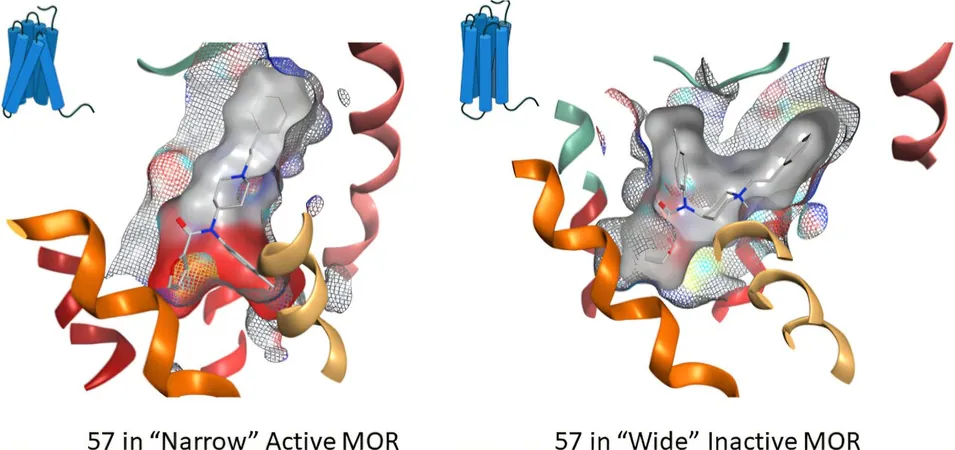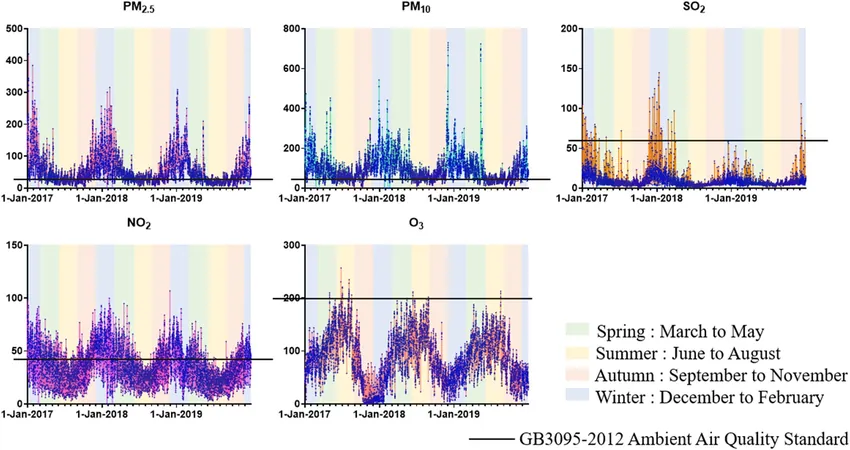
Is the Key to Stopping Fentanyl Overdoses Hidden in Its Chemical Design?
2024-11-13
Author: Siti
The opioid crisis continues to ravage the United States, largely a result of the rampant over-prescription of pain medications such as oxycodone. As regulations tightened and access to these pharmaceuticals became limited, users turned to more dangerous alternatives like heroin and fentanyl, leading to escalating overdose deaths.
Among these opioids, fentanyl and its derivatives, known as fentalogs, are alarmingly potent; just 2 milligrams can be fatal. These substances interact with the mu-opioid receptor in the body, which serves not only to alleviate pain but also plays a key role in their addictive qualities and lethality.
Researchers at the University of Michigan believe they may find a solution to the fentanyl overdose crisis by delving into the very chemistry that makes these substances so deadly. Jess Anand, Ph.D., a research assistant professor at U-M's Medical School, explains that when law enforcement seizes drugs, they typically send them for laboratory testing to determine their composition. Such analyses can reveal whether the substance is a legal drug, a controlled substance, or potentially an analog of a known synthetic opioid.
Currently, non-medical use of fentalogs is classified under Schedule 1, indicating they have no accepted medical use and a high potential for abuse. However, Anand and her team suspect that some fentalogs could serve as effective antidotes to fentanyl, much like naloxone—an existing opioid antagonist derived from morphine that can reverse the effects of various opioids, but often falls short against fentanyl.
Naloxone's mechanism involves tightly binding to the mu-opioid receptor to block the effects of opioids, yet in cases of fentanyl overdoses, additional solutions are desperately needed.
In a groundbreaking study published in ACS Chemical Neuroscience, Anand, along with colleague John Traynor, Ph.D., conducted tests on a library of 70 fentalogs to pinpoint which of these compounds could obstruct fentanyl's interaction with the mu-opioid receptor more effectively. Their efforts revealed one promising molecule that parallels naloxone’s capacity to revive normal breathing in an experimental mouse model after a significant fentanyl dose.
Although these preliminary findings bring hope, Anand highlights the challenges posed by research regulations surrounding Schedule 1 substances, which can impede scientific exploration. She emphasizes the importance of curiosity in the scientific community, urging researchers to investigate every avenue of the chemical relationships that govern these drugs.
“This discovery could mean the difference between life and death,” Anand reflects. “A slight modification in a molecule can lead to an entirely different therapeutic effect.”
As we face a relentless battle against opioid overdoses, the potential antidote to fentanyl may lie dormant in laboratories across the nation, waiting for a curious mind to unlock its secrets. Now is the time for innovative thinking in the fight against this devastating epidemic. Will the next breakthrough come from a lab inspired to explore the untapped potential of fentanyl fentalogs? Only time will tell.


 Brasil (PT)
Brasil (PT)
 Canada (EN)
Canada (EN)
 Chile (ES)
Chile (ES)
 España (ES)
España (ES)
 France (FR)
France (FR)
 Hong Kong (EN)
Hong Kong (EN)
 Italia (IT)
Italia (IT)
 日本 (JA)
日本 (JA)
 Magyarország (HU)
Magyarország (HU)
 Norge (NO)
Norge (NO)
 Polska (PL)
Polska (PL)
 Schweiz (DE)
Schweiz (DE)
 Singapore (EN)
Singapore (EN)
 Sverige (SV)
Sverige (SV)
 Suomi (FI)
Suomi (FI)
 Türkiye (TR)
Türkiye (TR)